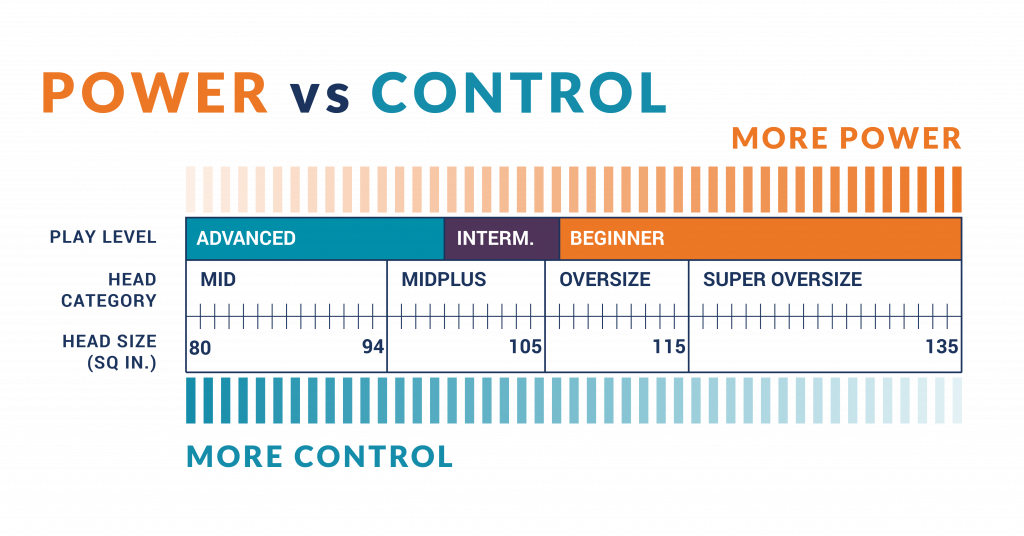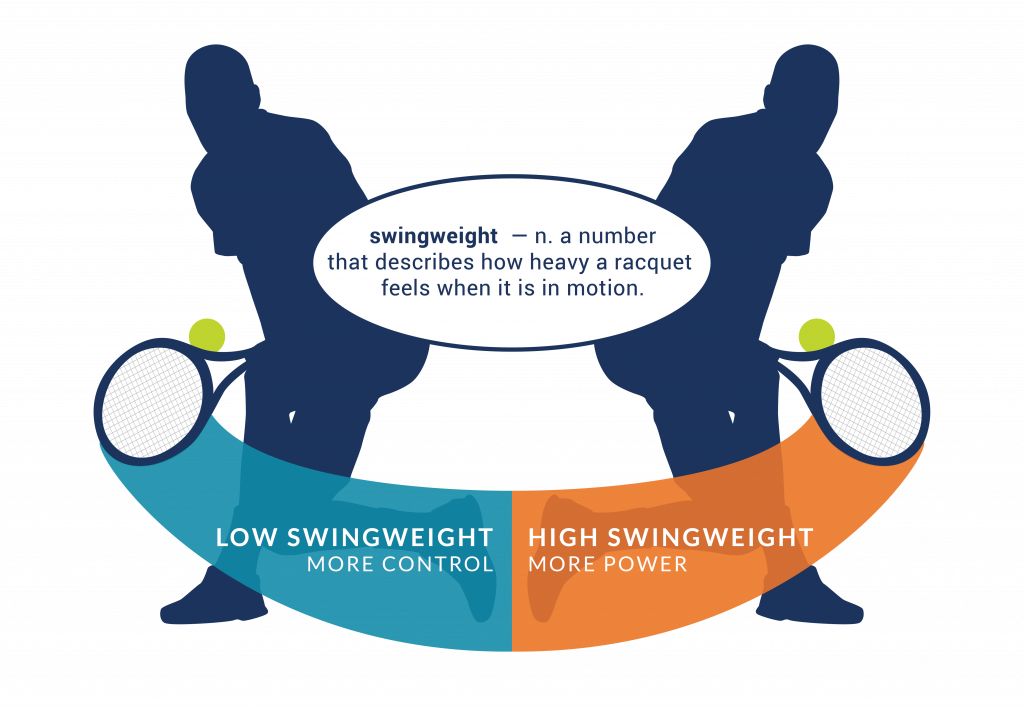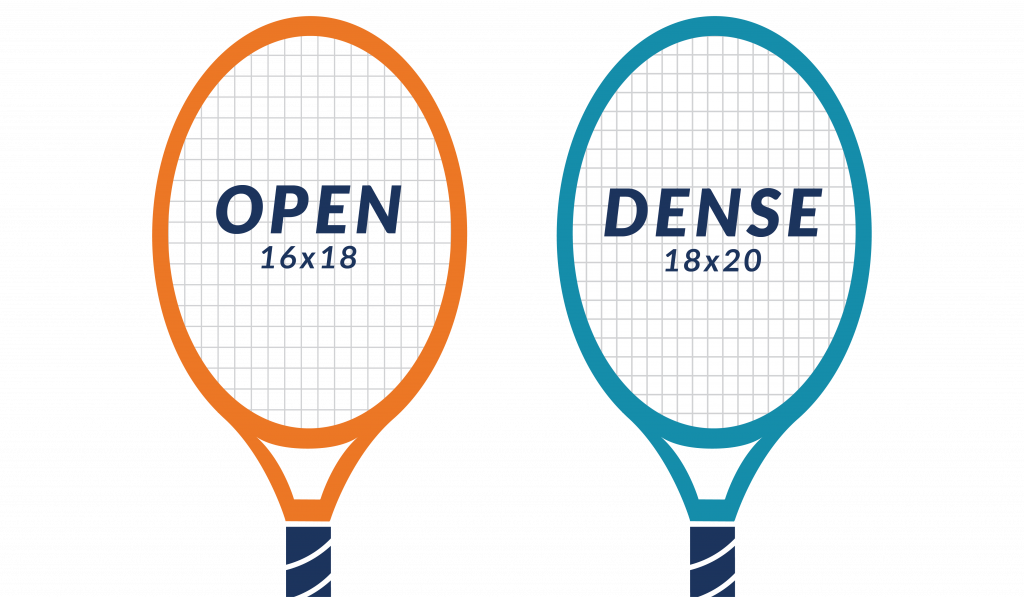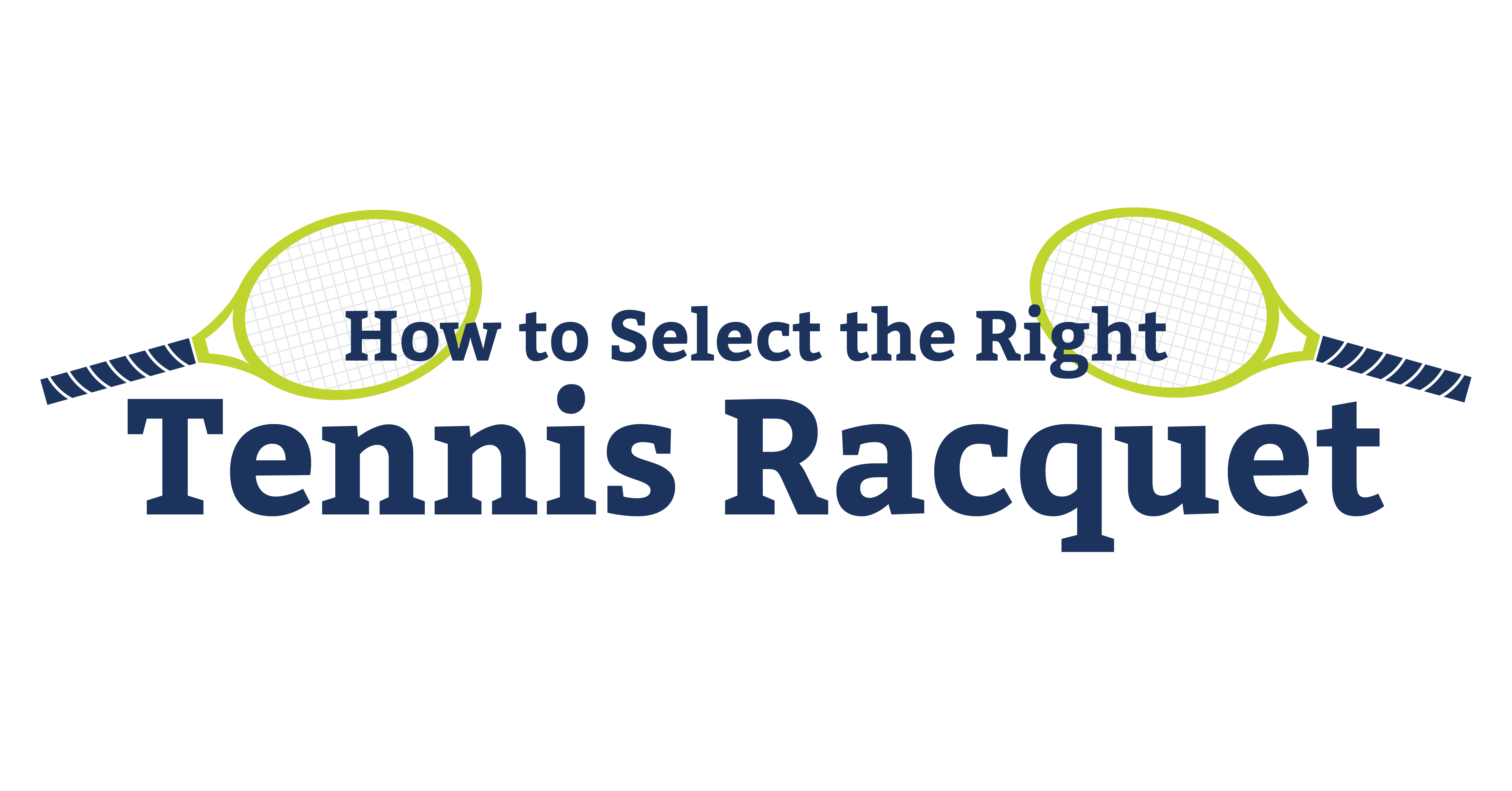We know that finding the right tennis racquet can be very confusing. That's why we're here to help you navigate the options, so you can feel more confident about choosing your stick. What do all of these factors mean and how do they apply to you?
1: Level of Play
There are three levels of play to consider when looking at racquets and each is designed to play to your strengths. There are racquets made for beginners, intermediate, and advanced players. Knowing your skill level is the first step to narrowing down your options. Use the NTRP Player Rating Scale to determine your level of play. Players with a 1.0 to 3.0 rating are typically classified as beginners, 3.5 to 4.0 as intermediate, and 4.0 to 7.0 as advanced.
2: Head Size

3: Length
Standard racquets (27") provide the most maneuverability while extended racquets will provide extra power and greater reach on groundstrokes and serves.

4: Swingweight

5: Frame Stiffness

6: String Pattern

Shop our adult tennis racquets and our junior tennis racquets

